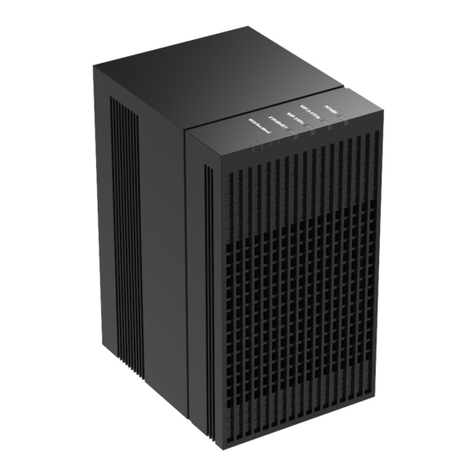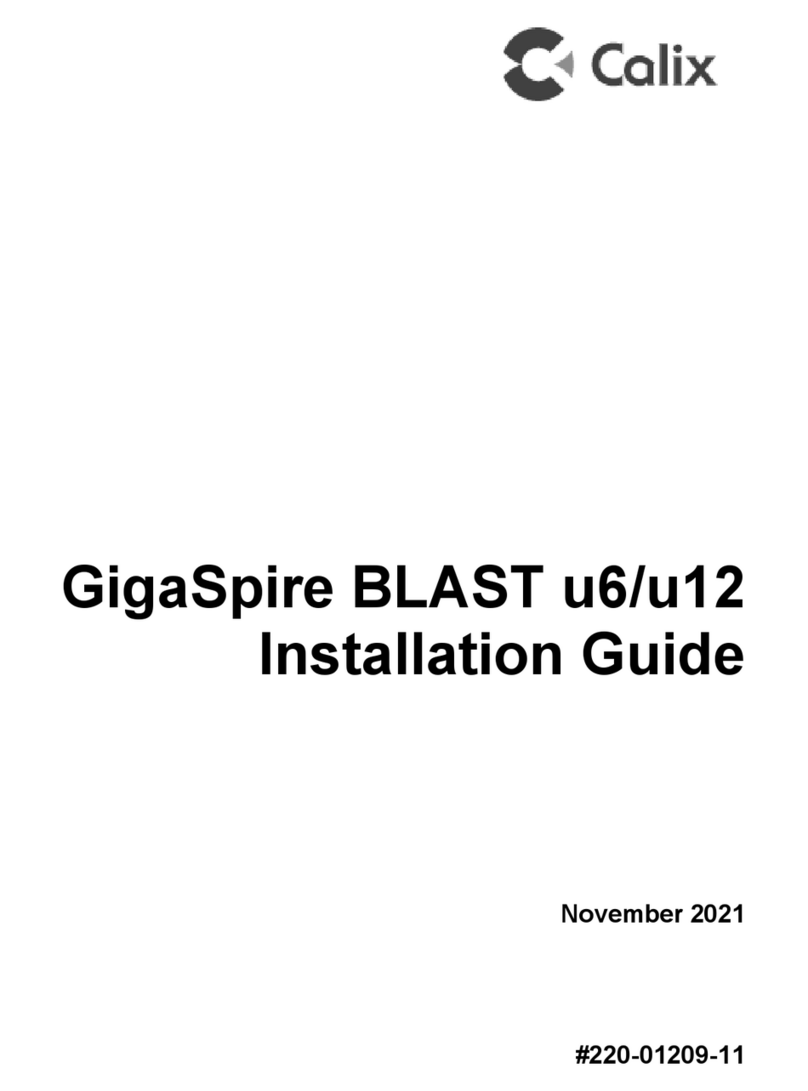
9
Proprietary Information: Not for use or disclosure except by written agreement with Calix.
© 2001-2007 Calix. All Rights Reserved.
Full-of-Potential Method
The “Full-of-Potential Method” (sometimes referred to as the “Three Terminal Method”) is
the most commonly accepted way to measure the total resistance of a grounded earth
electrode. Providing that the measured resistance at the conclusion of the test meets the
specified requirements, no additional testing is required. The test procedure measures the
total resistance of the earth ground electrode, the contact resistance of the electrode to the
earth, and the earth near the grounding system.
An earth resistance megger is a test set used to make resistance measurements of earth
electrodes. An AC voltage is applied across two electrodes that have been placed into the
ground at a certain distance apart from each other. As current passes through the ground
between the electrodes, a voltage can be measured at a point between the electrodes. The test
set provides an internal voltage meter to accommodate this measurement. The voltage
reading taken by the test set is converted to ohms of resistance by using Ohms Law (R=E/I).
You start the test by connecting the megger to the earth electrode that is being tested. A
second test electrode is placed into the ground at a distance out and away from the outer
current electrode that is under test. The distance between the electrode being tested and the
outer current electrode may be limited by the physical characteristic of the surrounding area,
or the length of the test conductor being used. It is not uncommon for the outer electrodes
to be spaced at 100 feet. A third test electrode is used as a probe and placed into the ground
at a number of points that are along a line between the outer electrodes. Each time the test
probe is placed into the ground, a resistance reading is taken and recorded. A simple
resistance curve is then plotted, as illustrated below. At about 60% of the distance between
the earth electrode under test and the outer current electrode, the resistance over distance
does not continue to increase. It is at this point that the resistance measurement taken is
most accurate.
In cases where the outer current electrode is placed too close to the earth electrode that is
under test, the earth shells that surround each electrode will overlap each other. Resistance
readings taken when earth shells overlap will be very inconsistent and, for the most part,
erroneous. As resistance measurements are taken and plotted, a curve of increasing resistance
over distance will accumulate. The resistance curve will not flatten out.
Most earth megger test sets will indicate the presence of stray electrical currents in the
ground. Resistance measurements taken under such a condition should not be relied on as
accurate. The source of the electrical currents should be identified and, if possible,
eliminated. The presence of electrical currents in or near a ground system will compromise
the overall integrity of the grounding system.

































